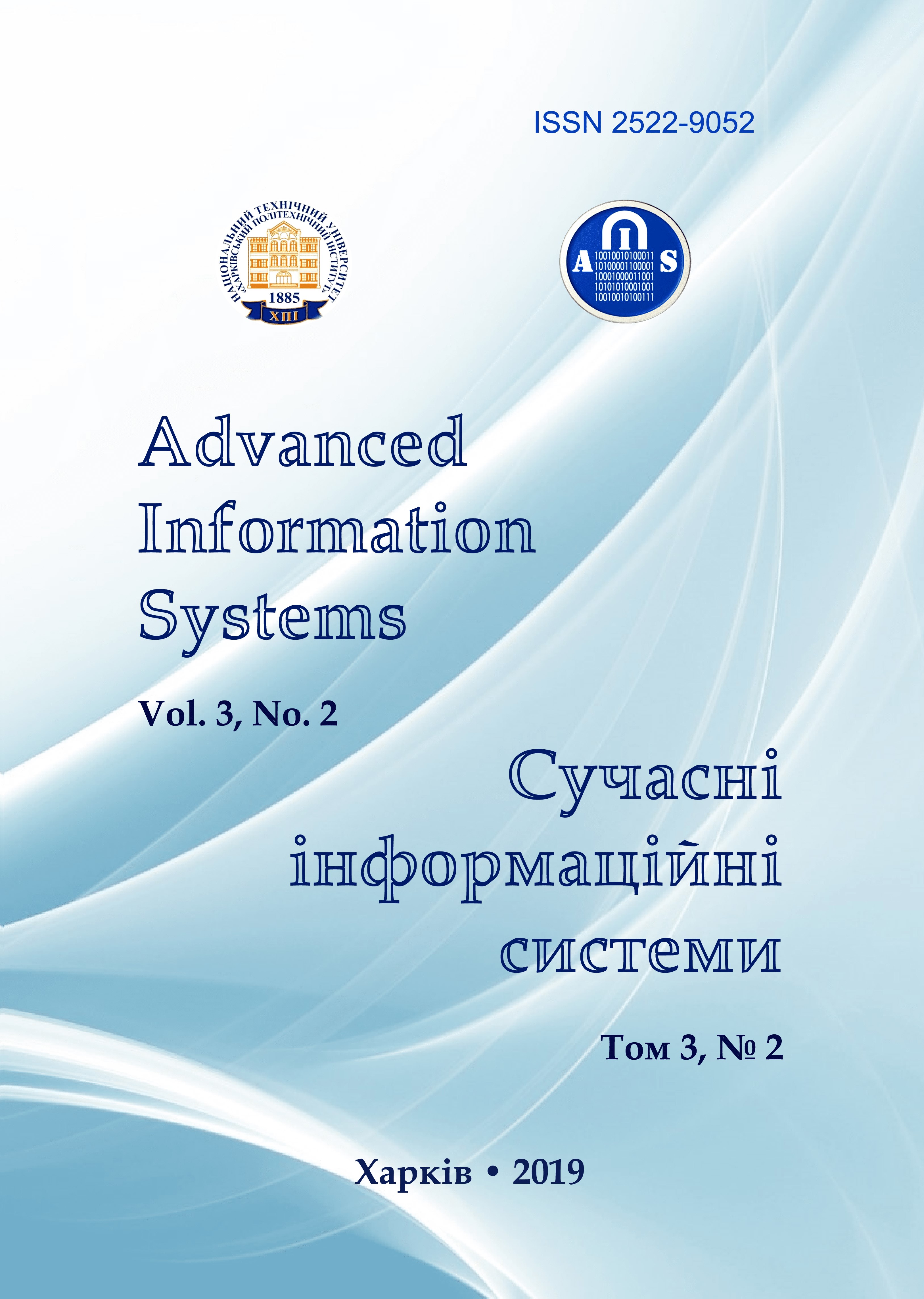ULTRA WIDEBAND TECHNOLOGIES IN MOBILE OBJECT MANAGEMENT SYSTEMS
Main Article Content
Abstract
Article Details
References
Qualifying Requirements QR-160D (2004), Environmental Conditions and Test Procedures for Airborne Equipment, ARIAC.
International Standard IEC 62305-1 Edition 2.0 2010-12 (2010), Annex A. Parameters of lightning current. Annex B. Time functions of the lightning current for analysis purposes.
Ruban I.V., Churyumov, G.I., Tokarev, V.V. and Tkachov, V.M. (2017), “Provision of Survivability of Reconfigurable Mobile System on Exposure to High-Power Electromagnetic Radiation”, Selected Papers of the XVII International Scientific and Practical Conference on Information Technologies and Security (ITS 2017), CEUR Workshop Processing, Kyiv, Ukraine, November 30, pp. 105–111.
Churyumov, G., Tokariev, V., Tkachov, V. and Partyka, S. (2018), “Scenario of Interaction of the Mobile Technical Objects in the Process of Transmission of Data Streams in Conditions of Impacting the Powerful Electromagnetic Field”, 2018 IEEE Second International Conference on Data Stream Mining & Processing (DSMP), 21–25 Aug. 2018, pp. 183–186.
International Standard IEC 1000-4-92 (1992), Immunity tests. Resistant to interference, Level of noise immunity.
Serkov, А., Breslavets, V., Tolkachov, M. and Kravets, V. (2018), “Method of coding information distributed by wireless communication lines under conditions of interference”, Advanced Information Systems, Vol. 2, No.2, pp. 145–148, DOI: https://doi.org/10.20998/2522-9052.2018.2.25
Serkov, A., Kravets, V., Sokolov, S., Breslavets, V., Shevtsova, V., Tolkachev, M., Marchenko, D. and Lazurenko, B. (2018), “Computer modeling of the process of stress and current generation in cable communication lines as a result of electromagnetic field, accompanying lightning discharge”, Research report under the contract No. 65708, December 22 2017 (2018), 57 p.
Makarenko, S.I. (2017), Informational confrontation and electronic warfare in the network-centric wars of the beginning of the XXI century, High Technologies, St. Petersburg, 546 p.
Harmuth, H.F. (1981), Non sinusoidal Waves for Radar and Radio Communication, Academic Press, New York, London, Toronto, Sydney, San Francisco, 376 p.
Serkov, A., Breslavets, V., Tolkachov, M., Churyumov, G. and Issam, Saad (2017), “Noise-like signals in wireless information transmission systems”, Advanced Information Systems, 2017, Vol. 1, No. 2, pp. 33–38, DOI: https://doi.org/10.20998/2522-9052.2017.2.06
Serkov, A.A. and Churyumov, G.I. (2017), “On the issue of solving the problem of electromagnetic compatibility of the wireless telecommunication systems”, Applied radio electronics, Vol. 16, No. 3-4, pp. 117–121.
Varganov, M.E., Zinoviev, Yu.S. and Astanin, L.Yu. (1985), Radiocative Characteristics of Aircraft, Radio and Communication, Moscow, 236 р.
Kordo-Sysoev, A.F. and Prylevsky, V.L. (2000), “Powerful Sourced of Ultra wide Bond Pulsed Cogerent Signals”, “EUROEM 2000’’ Euro Electromagnetic, Edinburg.
Serkov, A., Breslavets, V., Yakovenko, I. and Dziabenko, O. (2018), “Excitation of surface vibrations of semiconductor structures exposed to external electromagnetic radiation”, Advanced Information Systems, Vol. 2, No. 3, pp. 142–146, DOI: https://doi.org/10.20998/2522-9052.2018.3.25
Serkov, O., Breslavets, V., Tolkachov, M. and Churyumov G. (2018), “The Wideband Pulsed Antenna and its Application”, 9-th Inter. Conf. on Ultra wideband and Ultrashort Impulse Signals (UWBUSIS-2018), September 4–7, Odessa, Ukraine, ISBN: 978-1-5386-2467-8, IEEE Catalog Number: CFP18587, pp. 340–343.
Marusenko, N.N. (2018), Model and method for providing ultra-wideband wireless communications, NTU "KhPI", Kharkov, 103 p.
Serkov, O.A., Breslavets, V.S., Tolkachov, M.Yu. and Churyumov G.I. (2018), Method of Generation the Wideband Impulse Signals and Antenna for his Realization, Patent appl. of Ukraine, for utility model number a 2018 03104; appl. 26.03.2018.
Serkov, A. and Churyumov G. (2018), “Ultra Wideband Signals in Wireless Control Systems and Communication”, 4-th China-Ukraine Science and Technology Forum, September 14–19, Harbin Institute of Technology, Harbin, China.
